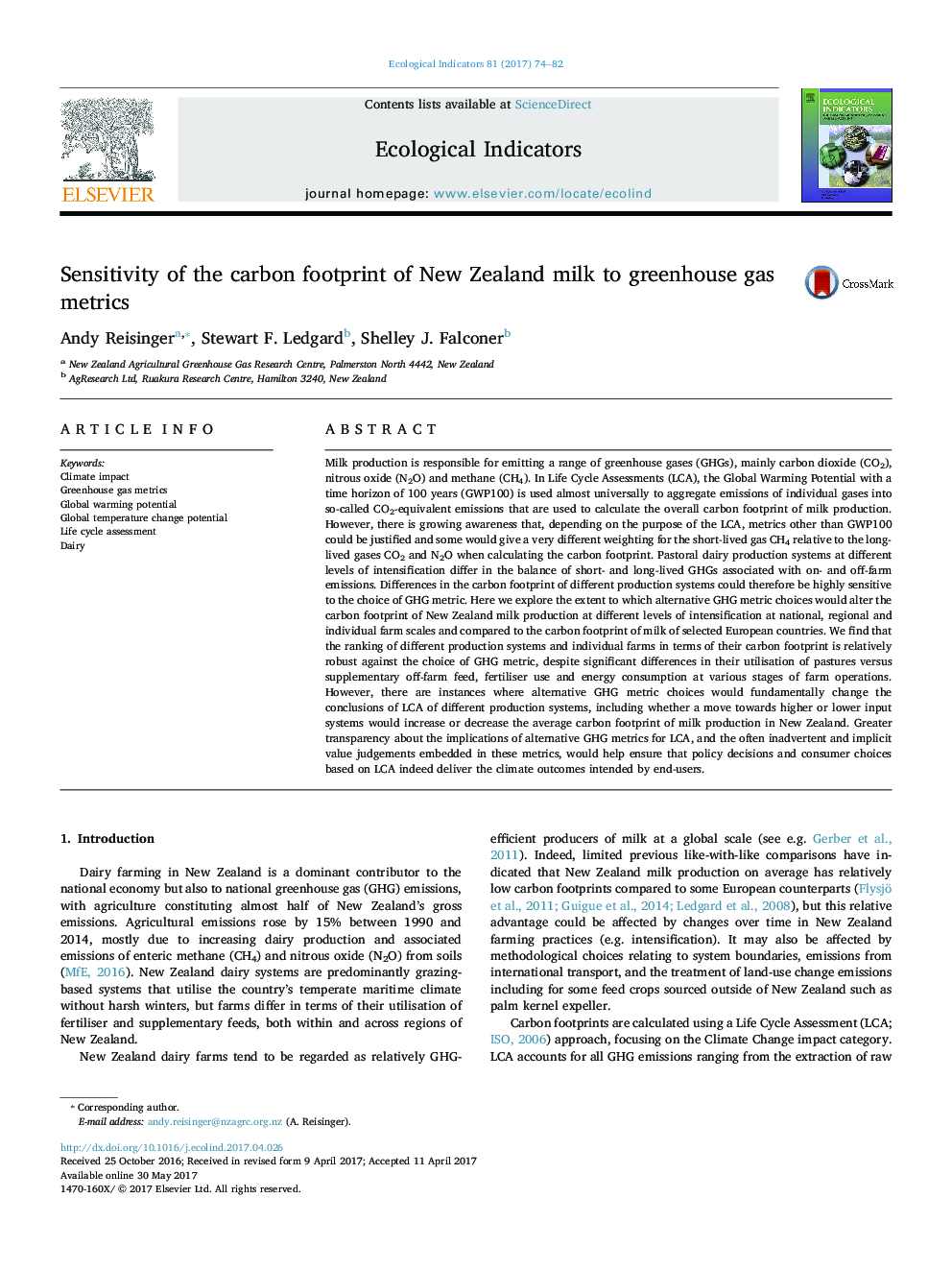| Article ID | Journal | Published Year | Pages | File Type |
|---|---|---|---|---|
| 5741412 | Ecological Indicators | 2017 | 9 Pages |
â¢The carbon footprint of milk depends on the choice of GHG metric.â¢GHG metrics that emphasise long-lived gases tend to favour low-input systems.â¢Differences in footprint among farms are greater if long-lived gases are emphasised.â¢Ranking is robust for most farms but differences are significant in some instances.â¢Transparency in the choice of GHG metrics would support more robust policy outcomes.
Milk production is responsible for emitting a range of greenhouse gases (GHGs), mainly carbon dioxide (CO2), nitrous oxide (N2O) and methane (CH4). In Life Cycle Assessments (LCA), the Global Warming Potential with a time horizon of 100 years (GWP100) is used almost universally to aggregate emissions of individual gases into so-called CO2-equivalent emissions that are used to calculate the overall carbon footprint of milk production. However, there is growing awareness that, depending on the purpose of the LCA, metrics other than GWP100 could be justified and some would give a very different weighting for the short-lived gas CH4 relative to the long-lived gases CO2 and N2O when calculating the carbon footprint. Pastoral dairy production systems at different levels of intensification differ in the balance of short- and long-lived GHGs associated with on- and off-farm emissions. Differences in the carbon footprint of different production systems could therefore be highly sensitive to the choice of GHG metric. Here we explore the extent to which alternative GHG metric choices would alter the carbon footprint of New Zealand milk production at different levels of intensification at national, regional and individual farm scales and compared to the carbon footprint of milk of selected European countries. We find that the ranking of different production systems and individual farms in terms of their carbon footprint is relatively robust against the choice of GHG metric, despite significant differences in their utilisation of pastures versus supplementary off-farm feed, fertiliser use and energy consumption at various stages of farm operations. However, there are instances where alternative GHG metric choices would fundamentally change the conclusions of LCA of different production systems, including whether a move towards higher or lower input systems would increase or decrease the average carbon footprint of milk production in New Zealand. Greater transparency about the implications of alternative GHG metrics for LCA, and the often inadvertent and implicit value judgements embedded in these metrics, would help ensure that policy decisions and consumer choices based on LCA indeed deliver the climate outcomes intended by end-users.
